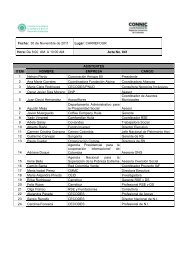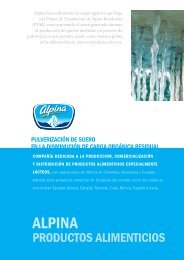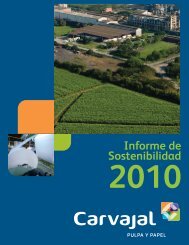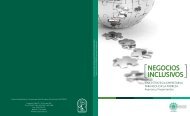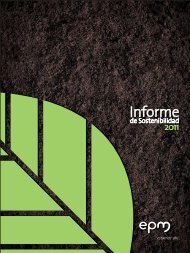Setting new standards - Friends Life
Setting new standards - Friends Life
Setting new standards - Friends Life
Create successful ePaper yourself
Turn your PDF publications into a flip-book with our unique Google optimized e-Paper software.
FINANCIAL STATEMENTS<br />
IFRS FINANCIAL STATEMENTS<br />
EEV SUPPLEMENTARY INFORMATION<br />
Notes to the consolidated accounts continued<br />
30. Risk management objectives and policies for mitigating risks continued<br />
(a) Market risk<br />
Market risk includes equity and property risk, foreign exchange risk and interest rate risk. The Group manages market risk attaching to assets<br />
backing specific policyholder liabilities and to assets held to deliver income and gains for the shareholder. Within the unit-linked funds and<br />
with-profits funds, the Group manages market risk so as to provide a return in line with the expectations of policyholders. The principal<br />
objective for shareholder assets is to manage them so that they meet the capital requirements of the Group, and support its future strategic<br />
and operational objectives.<br />
Appetite for market risk varies for different asset classes and by the nature of the liabilities or funds that they represent. For example, in the<br />
<strong>Life</strong> & Pensions business, in relation to equity risk, appetite varies from taking on the risk when it is beneficial to do so for shareholder<br />
earnings at risk from annual management charges on unit-linked policies to avoiding risk wherever possible for assets backing non-linked,<br />
non-profit policies.<br />
For assets backing policyholder liabilities, market risk is managed by matching, where possible, the duration and profile of assets to the<br />
policyholder liabilities they are backing. This helps manage market risk to the extent that changes in the values of assets are matched by a<br />
corresponding movement in the values of liabilities.<br />
Market risk arises on guarantees and options offered on certain of the Group’s products. As described within the section on policyholder<br />
liabilities (see note 27), the Group is exposed to guarantees on bonus additions that become more valuable as investment values fall. In<br />
addition, the Group is exposed to guaranteed cash and annuity options on certain pension policies that become more valuable as interest<br />
rates fall.<br />
Shareholders’ earnings are further exposed to market risk to the extent that the income from policyholder funds is based on the value of<br />
financial assets held within those unit-linked or with-profits funds.<br />
Within F&C, there is no net market risk in relation to customer assets because the risk is fully borne by the clients concerned. Other assets<br />
and liabilities do not expose the Asset Management business to significant market risk. F&C actively pursues market risk in relation to the<br />
impact on management fees of movements in market variables such as equity prices and interest rates.<br />
The following summarises the key actions undertaken by the Group to manage all aspects of market risk:<br />
The Group Board Investment Committee oversees investment policy and strategy, which the Group actions primarily through the use of<br />
investment fund mandates. Day-to-day implementation of investment policy and strategy is managed predominantly by F&C in line with these<br />
approved mandates, subject to robust monitoring by the Group.<br />
Mandates are set for each relevant fund within each of the insurance legal entities within the Group taking account of the relevant factors<br />
outlined above. Unit-linked funds are managed in line with their underlying objectives. The mandates set limits on the level of market risk<br />
permitted using some or all of the following mechanisms:<br />
• defined performance benchmarks<br />
• a maximum proportion of the fund that can be held in equities and, for with-profits funds, a minimum level<br />
• restrictions on the size of companies within which equity investment can be held (eg potentially restricting UK equity to FTSE 100 stocks)<br />
• defined asset allocations between UK and overseas equity exposure in specific regions<br />
• restrictions on the variation of the duration of the portfolio of bonds from the benchmark duration.<br />
Equity derivatives are permitted to be held to facilitate efficient portfolio management or to reduce investment risk (without disproportionately<br />
increasing other types of risk), and appropriate approval must be obtained for their use. Currency forwards and other derivatives may be held<br />
to manage currency risk, but only if permitted by individual fund mandates.<br />
In addition to the mandates, the Group undertakes a programme of asset/liability management. For example, in order to manage the impact<br />
of interest changes on profit, corporate bonds and gilts are held to match the duration of annuity and permanent health insurance policies.<br />
This provides matching of cash flows and valuation movements and is supplemented by the use of interest rate swaps to improve<br />
asset/liability matching as necessary.<br />
144 <strong>Friends</strong> Provident Annual Report & Accounts 2006








